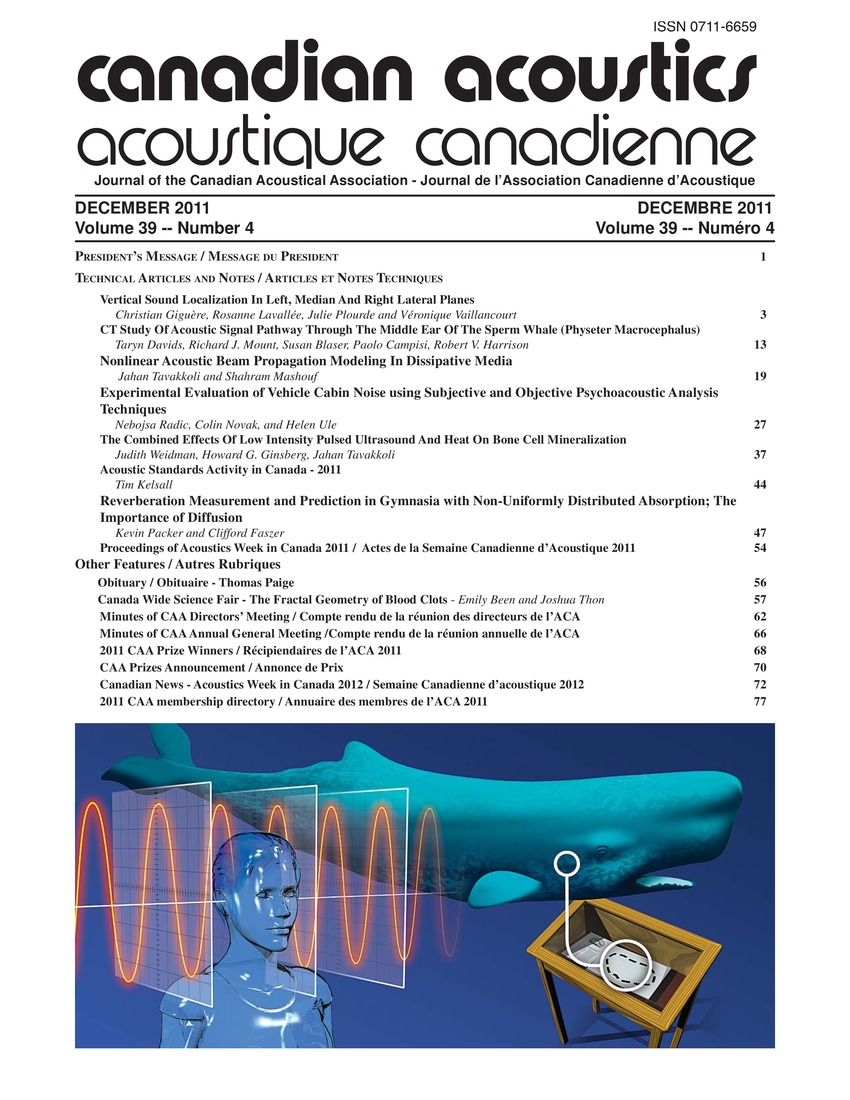Nonlinear acoustic beam propagation modeling in dissipative media
Keywords:
Diffraction, Geometry, Numerical methods, Tissue, Ultrasonic testing, Ultrasonics, 3D numerical model, 3D solutions, Axisymmetric, Biomedical ultrasound, Computational tools, Continuous wave ultrasound, Definition method, Dissipative media, Experimental data, High intensity focused ultrasound, Non-invasive, Non-linear acoustics, Non-linear numerical model, Non-linear ultrasound, Non-Linearity, Nonlinear propagation, Nonlinear propagation effect, Second-order operators, Soft tissue, Source geometry, Treatment modality, Ultrasound beamsAbstract
Accurate simulation of an intensive ultrasound beam requires taking nonlinear propagation effects into account. A notable example in the field of biomedical ultrasound where the effect of nonlinearity may play a significant role is the high intensity focused ultrasound (HIFU) as a non-invasive energy-based treatment modality. In this work, a 3D numerical model to simulate nonlinear propagation of continuous wave ultrasound beams in dissipative homogeneous tissue-like media is presented. The model implements a second-order operator splitting method in which the effects of diffraction, nonlinearity and attenuation are propagated over incremental steps. The model makes use of an arbitrary 3D source geometry definition method and a non axi-symmetric propagation scheme, which leads to a 3D solution to the resulting nonlinear ultrasound field. This work builds on methods developed by Tavakkoli et al. (1998) and Zemp et al. (2003) and offers an efficient way to calculate nonlinear field of continuous wave ultrasound sources. The proposed model is a particularly useful computational tool in carrying out simulations of high intensity focused ultrasound beams in soft tissue where the effects of nonlinearity, diffraction, and attenuation are important. The model was validated through comparisons with other established linear and nonlinear numerical models as well as published experimental data.Additional Files
Published
How to Cite
Issue
Section
License
Author Licensing Addendum
This Licensing Addendum ("Addendum") is entered into between the undersigned Author(s) and Canadian Acoustics journal published by the Canadian Acoustical Association (hereinafter referred to as the "Publisher"). The Author(s) and the Publisher agree as follows:
-
Retained Rights: The Author(s) retain(s) the following rights:
- The right to reproduce, distribute, and publicly display the Work on the Author's personal website or the website of the Author's institution.
- The right to use the Work in the Author's teaching activities and presentations.
- The right to include the Work in a compilation for the Author's personal use, not for sale.
-
Grant of License: The Author(s) grant(s) to the Publisher a worldwide exclusive license to publish, reproduce, distribute, and display the Work in Canadian Acoustics and any other formats and media deemed appropriate by the Publisher.
-
Attribution: The Publisher agrees to include proper attribution to the Author(s) in all publications and reproductions of the Work.
-
No Conflict: This Addendum is intended to be in harmony with, and not in conflict with, the terms and conditions of the original agreement entered into between the Author(s) and the Publisher.
-
Copyright Clause: Copyright on articles is held by the Author(s). The corresponding Author has the right to grant on behalf of all Authors and does grant on behalf of all Authors, a worldwide exclusive license to the Publisher and its licensees in perpetuity, in all forms, formats, and media (whether known now or created in the future), including but not limited to the rights to publish, reproduce, distribute, display, store, translate, create adaptations, reprints, include within collections, and create summaries, extracts, and/or abstracts of the Contribution.


